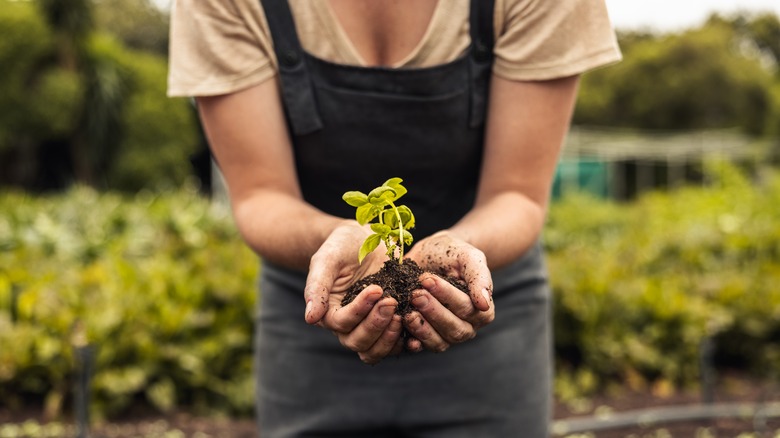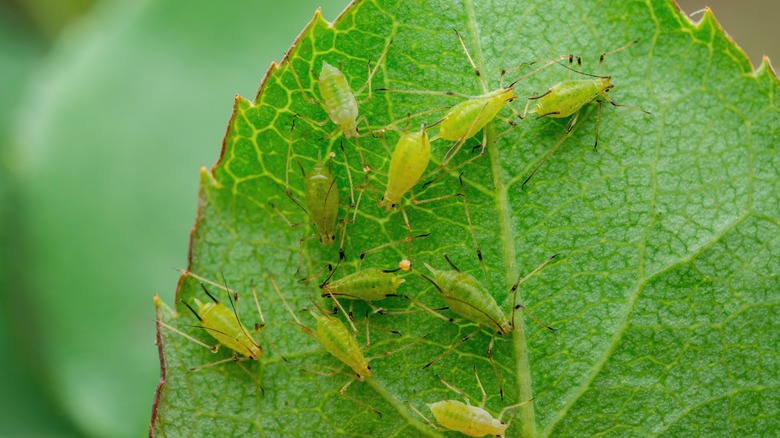Here's How Often You Should Be Checking Your Plants For Pests
One vital aspect of plant care that often gets overlooked is pest management. A comprehensive pest management strategy hinges on regularly checking your plants daily, if possible, for any signs of infestation. This proactive approach can protect your plants from irreversible damage, ensure they thrive, and beautify your home. Indeed, cultivating plants involves more than just providing water, sunlight, and nutrients. Unseen to the naked eye, various pests could wreak havoc on your green companions, significantly impacting their health and growth.
To ensure you identify the pests accurately and use appropriate control methods, it's crucial to familiarize yourself with these common pests that could pose a threat to your green companions. Aphids, for example, are one of the most common plant pests. These small sap-sucking insects are commonly found in home yards and gardens. On the other hand, spider mites are identifiable by the fine webbing they leave on plants, which can cause significant discoloration. Another common pest frequently infesting houseplants is mealybugs, identifiable by their cotton-like residue. Whiteflies and scale insects are frequent invaders that can cause yellowing leaves and stunted growth.
With the types of pests out of the way, we'll further explore how often you should check your plants for pests and why this practice is crucial.
The frequency of checking your plants for pests
Determining the right frequency for checking your plants for pests is crucial to effective pest management. While some recommend daily inspection, others say once a week. The key is consistency; pest populations can explode in a few days if left unchecked. However, the frequency might need to increase depending on the plant type and the season. Indeed, certain plants are more likely to attract pests. Often, weak or stressed plants are the first to fall prey to pests, so ensuring overall plant health is crucial.
Additionally, plants with soft, succulent growth, such as aphids' favored pennyroyal, are often targeted. Vegetables, especially those in the cabbage family, can attract various pests, including caterpillars. Similarly, roses are infamous for enticing other pests like greenflies. Thus, while planning your garden, consider these factors and prepare a suitable pest control strategy.
Understanding the seasonal pest dynamics is also crucial for effective plant care. It would help if you heightened your vigilance and pest management efforts in the warmer months, ensuring you conduct more frequent and thorough inspections of your plants. Understanding the seasonality of insect activity can help you better prepare yourself to defend your plants, ensuring their vigor and health throughout the year. For instance, you might have to check your plants daily in Florida, where pests are more active during the warmer months. Similarly, you should check on a new plant you've just brought into your house or garden more frequently during the first few weeks.
Signs of pests and the importance of regular checks
When checking your plants for pests, look out for signs such as discoloration, abnormal growth, drooping leaves, visible insects, and mites on the underside of leaves. Also, be on the lookout for honeydew, a sticky substance left by certain pests like aphids and scale insects. Regularly inspecting your plants allows for early detection of these signs, enabling you to take swift action to control the pests before they cause significant damage. You should note that some pests can spread diseases, severely impacting a plant's health and potentially infecting other plants.
Also, remember that pest management goes beyond just eliminating pests. It's also about creating an environment less conducive to pest infestations. This means properly spacing your plants, maintaining appropriate humidity levels, and ensuring your plants are in optimal health — as mentioned, stressed plants are more susceptible to pest attacks. Regularly checking for pests should be a central part of your holistic plant care routine.
In conclusion, maintaining a regular schedule for inspecting your plants is essential to effectively managing pests. By keeping a keen eye on the health of your plants and understanding the signs of a potential pest invasion, you are ensuring that your green companions continue to thrive.


